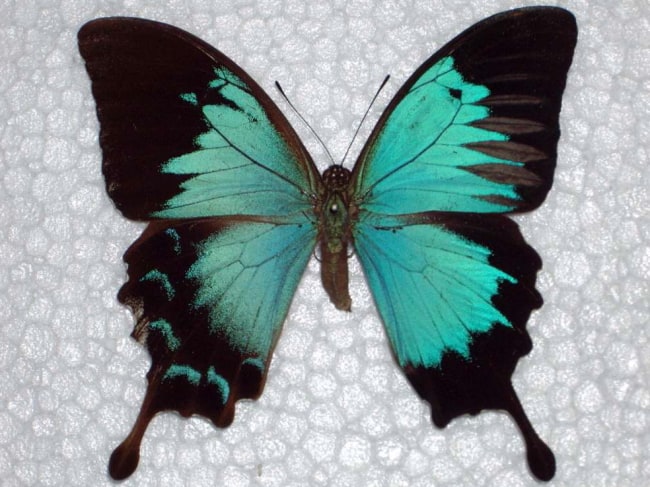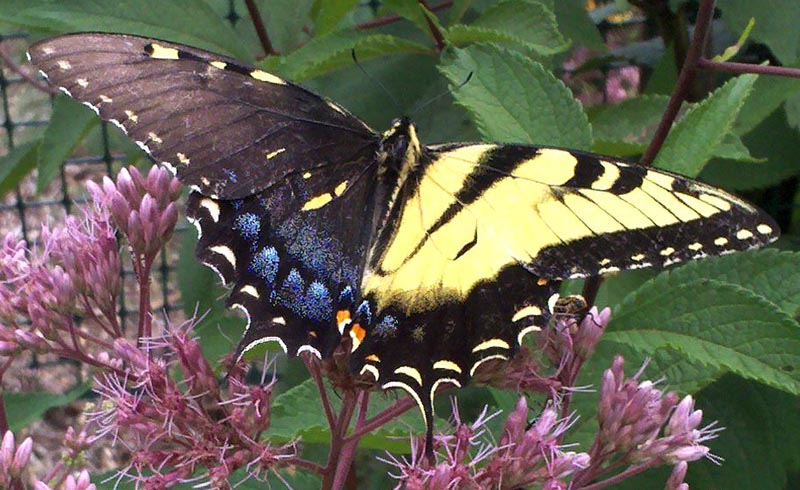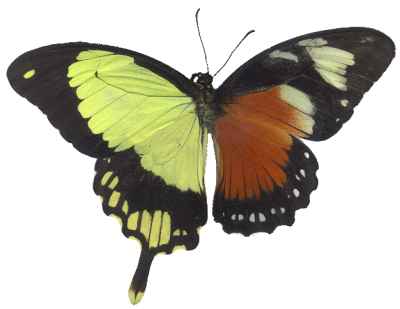This specimen of Papilio ulysses (Ulysses Swallowtail) resides in the collection of my mate Al Hopkinson, who very kindly provided the photo for this blog post. The butterfly is clearly asymmetrical, because its left side is female and the right side is male. The butterfly is literally split down the middle; the male side has more extensive blue patches and the distinctive dark grey elliptical sex markings on the forewing, whilst the female’s hindwing has blue crescents outside the main blue patch.
This phenomenon is known as bilateral gynandromorphy, and is estimated to occur in perhaps one in 10,000 butterflies (0.01% of the population). An explanation of the genetics behind the condition can be found in this paper describing an occurrence in the lovely British butterfly Anthocharis cardamines (Orange Tip).
As the incidence of bilateral gynandromorphs is so low, they are rarely seen and so are highly prized by collectors and photographers alike. These butterflies can look utterly bizarre when it occurs in species that are highly sexually dimorphic, as the two sides of the butterfly can be markedly different in both size and appearance.
A Google search can quickly provide plenty of examples. I’ve embedded several interesting images below; all are links to the websites where I found them :








Martin, first of all congratulations on the new website, it looks fantastic, great photos and site locations that you don’t see on any other site.
I remember that bilateral gynandromorph ulysses caught circa 1980 in the Kuranda region like it was yesterday. It was on one of the many trips to Cairns brother Mark and i took in the 80’s and 90’s. Great memories of those days.
Thanks Al, and thanks again for letting me use the Ulysses photo.
I’m looking forward to posting some of the other photos you’ve sent me – fantastic specimens!